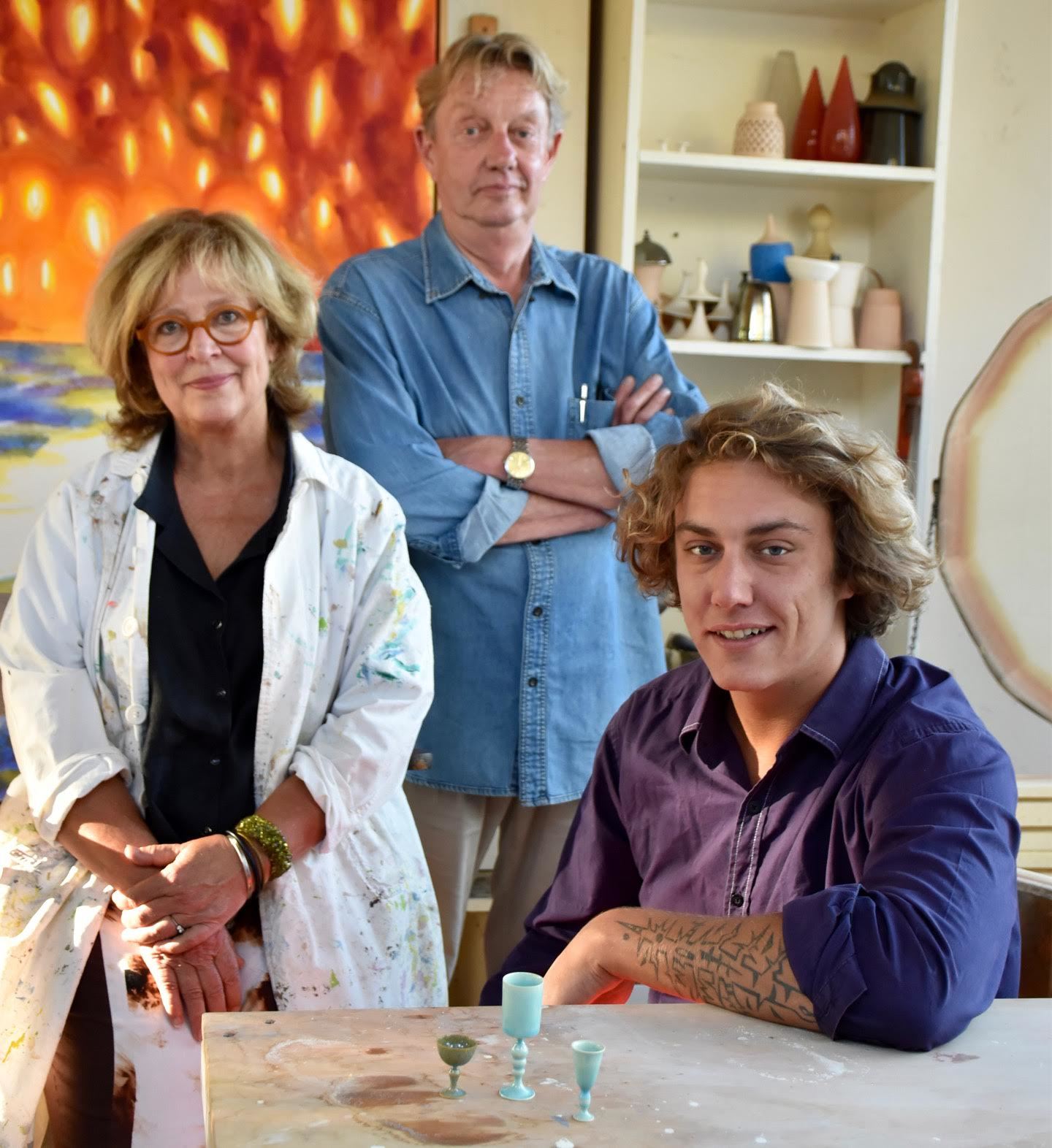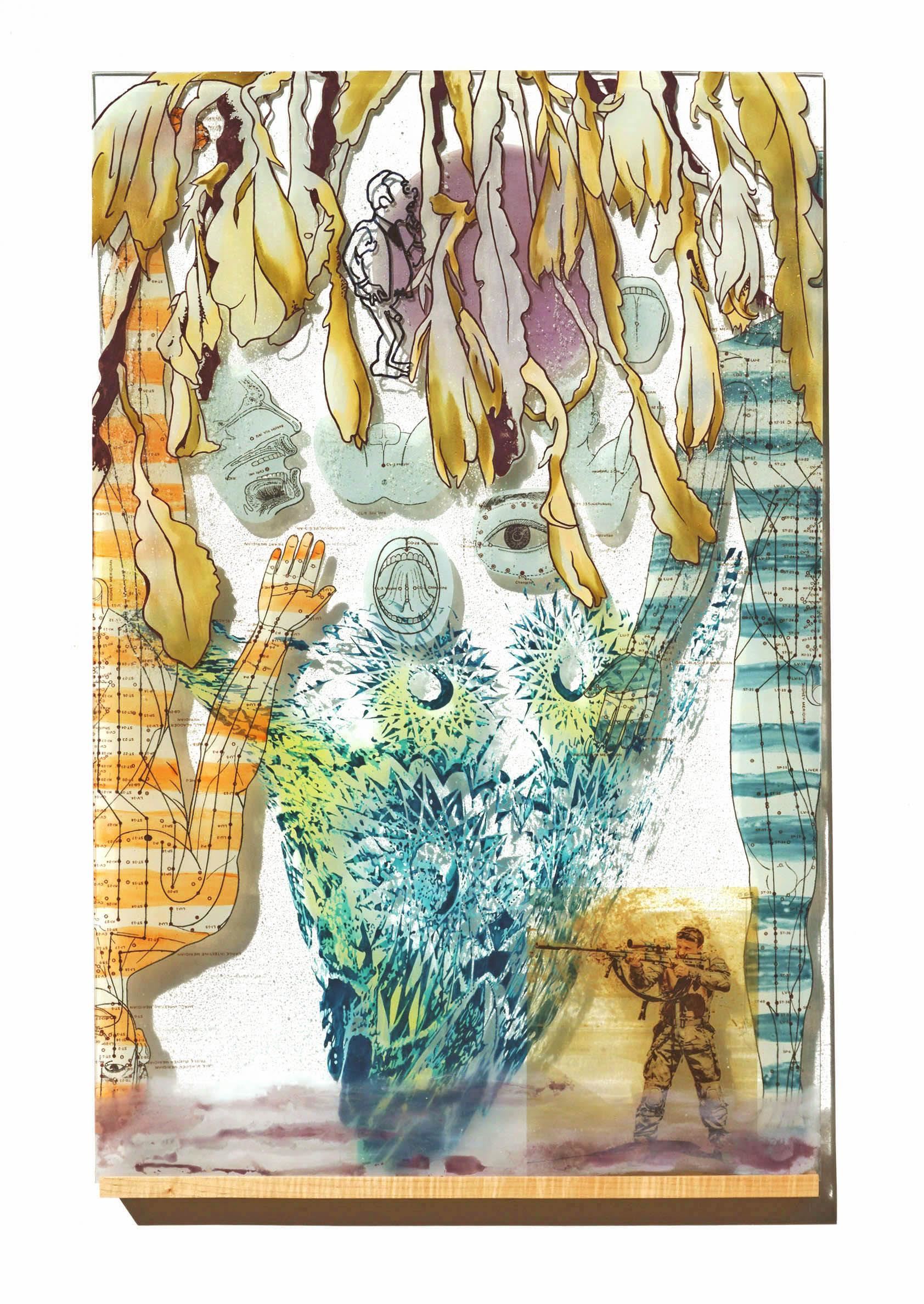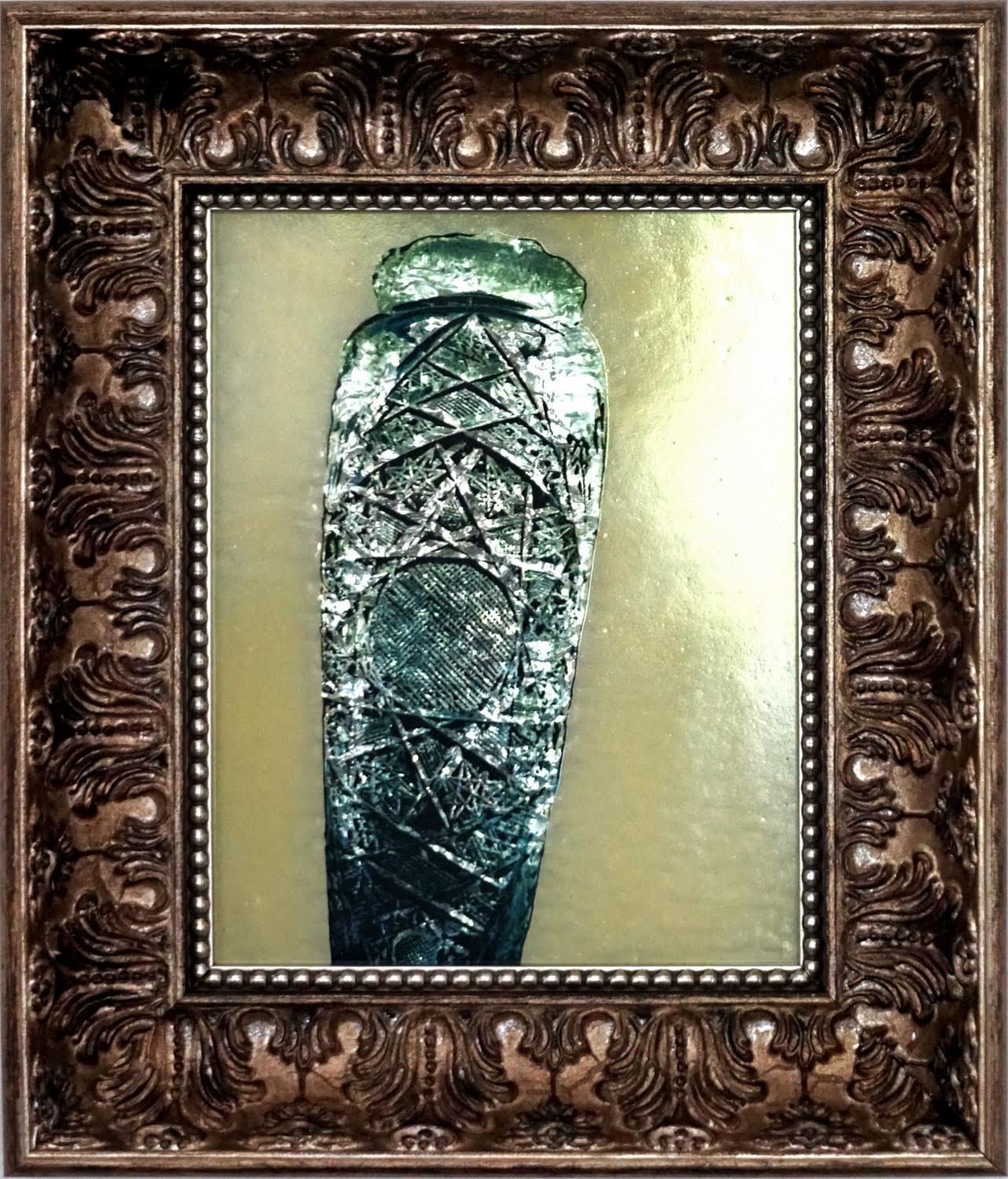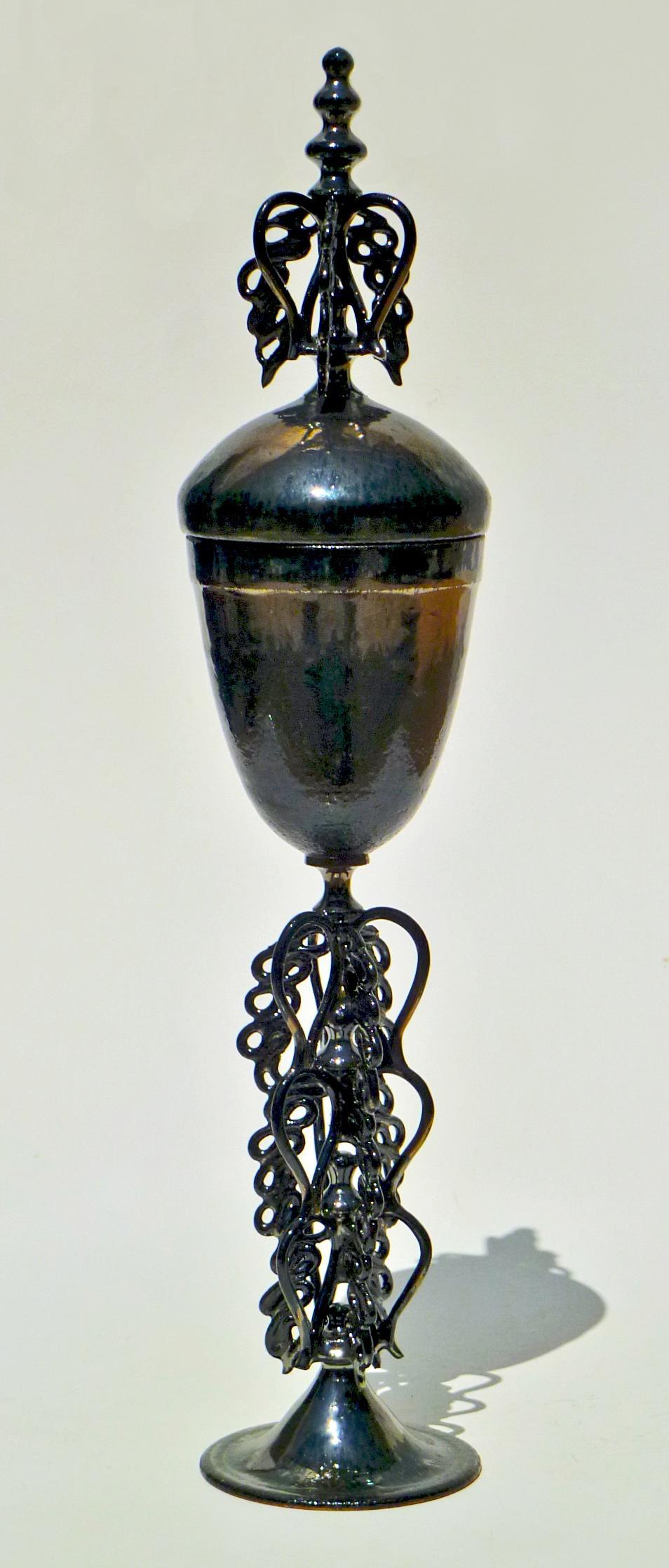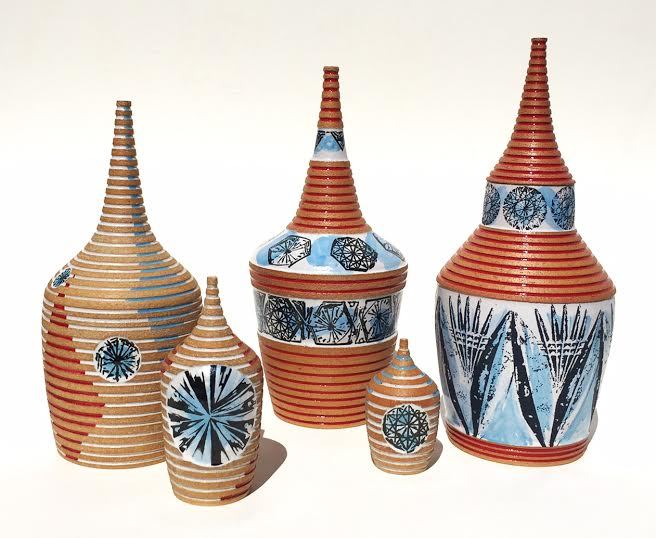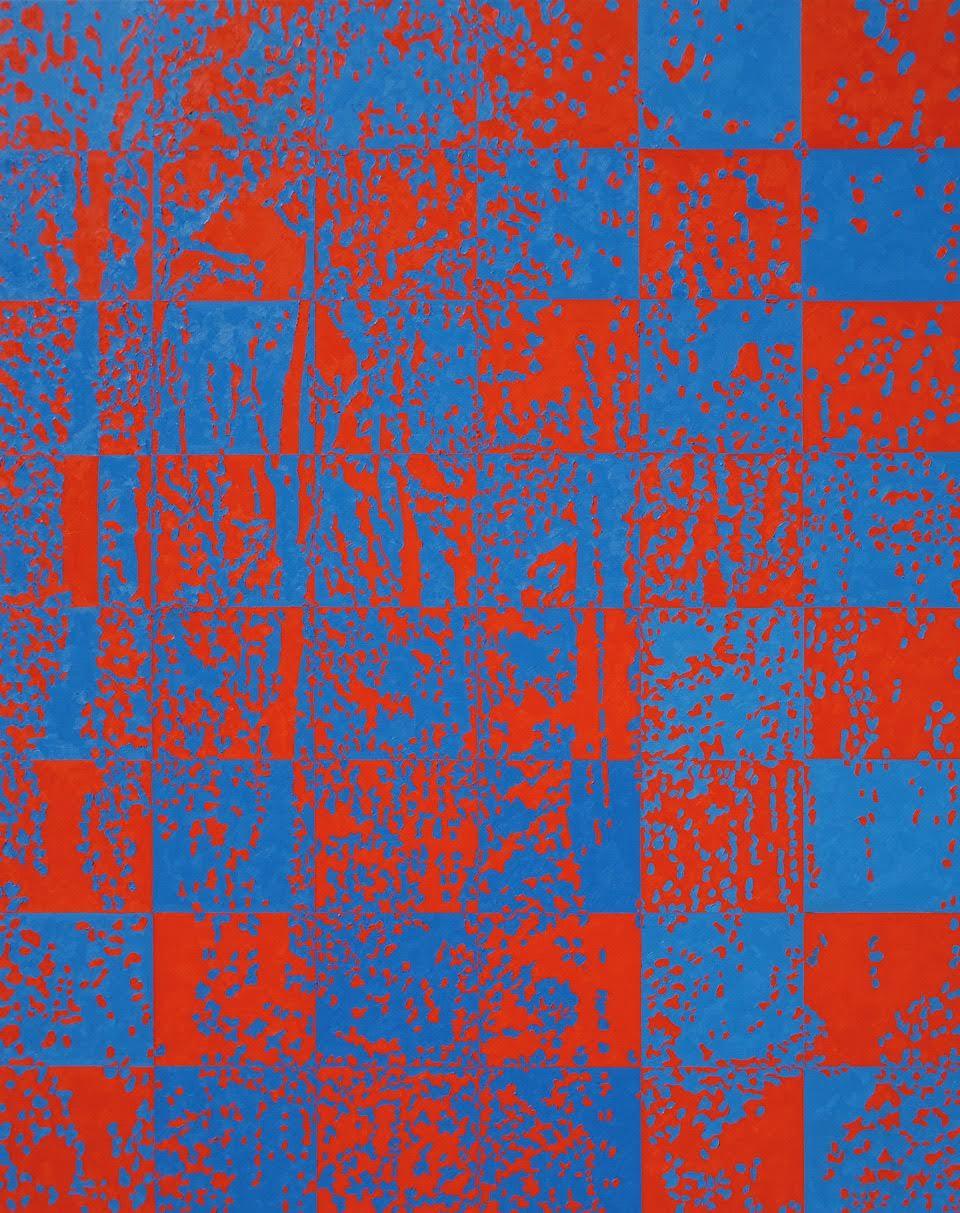Curators will sometimes put together a group of artists who explore similar territory as a way to present varied takes on an individual theme. A new exhibition at the Studio Channel Islands' Blackboard Gallery this August groups works allied not only by subject matter but by blood ties. Glass artist Susan Stinsmuehlen-Amend will join her husband, painter Richard Amend, and son, ceramic sculptor Wyatt Amend, in the wittily-titled exhibit "Making Amends," which will run from August 4th through the 27th. Individual works as well as cross-media collaborations will reveal shared artistic methods and concerns that take the exhibit's rationale well beyond simple familial ties.
Susan Stinsmuehlen-Amend has been active in the arts community for over 40 years. After studying drawing and painting at Hood College and the University of Texas at Austin (where she studied under glass artist Paul Marioni), Susan became co-owner and designer of the Renaissance Glass Company in Austin from 1973-87. She served as the first woman president of the Glass Art Society from 1984-86, a board member and president of the Ojai Arts Commission from 2000-14, and a board member of the Pilchuck Glass School since 2012 -- which she remains to this day. As an artist whose work has been collected by the Museum of Arts and Design and Detroit Institute of the Arts, Susan has been a guest lecturer and artist for notable institutions like the aforementioned Pilchuck, the Penland School of Crafts, and the Rhode Island School of Design.
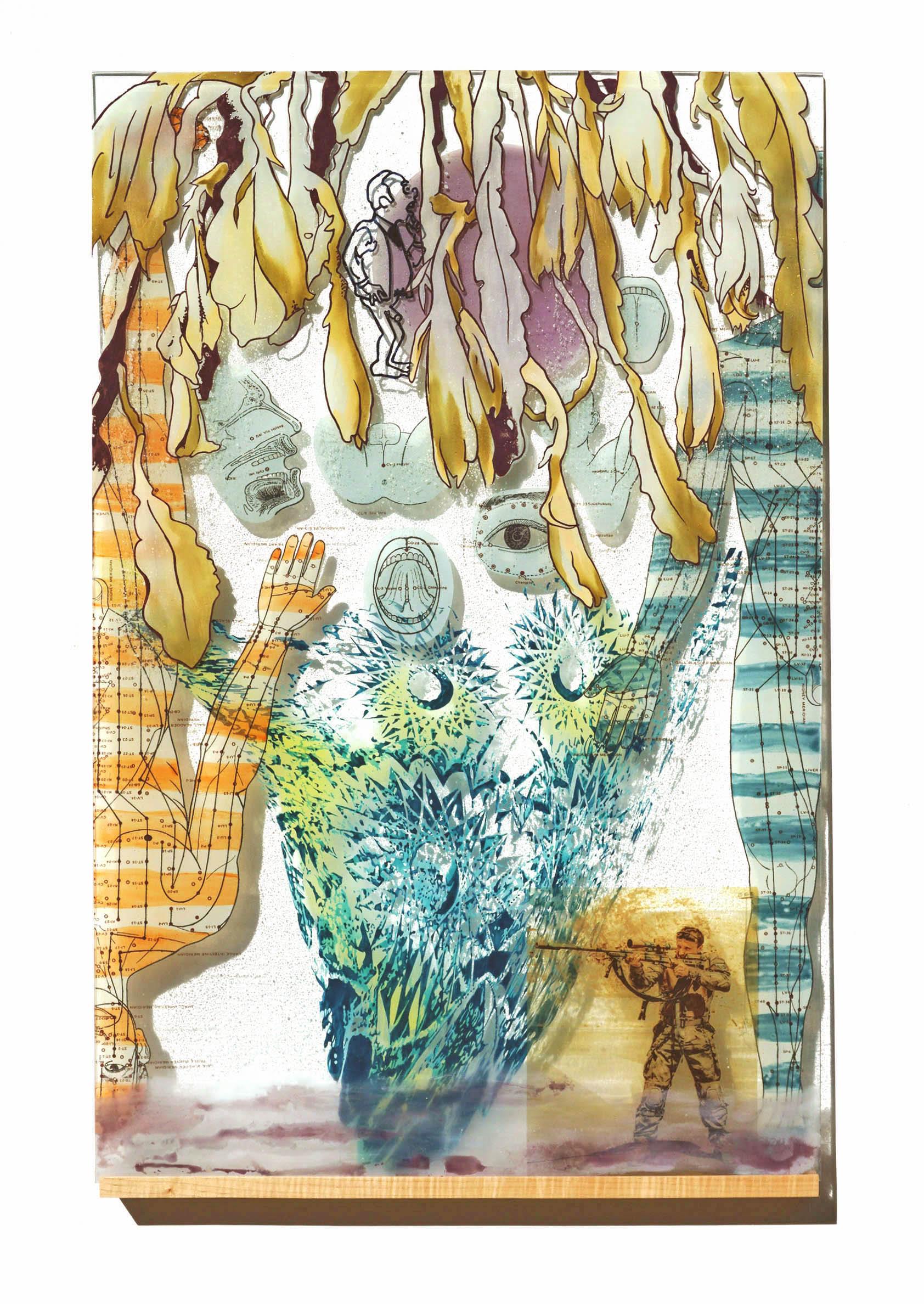
Despite her mainstream activity and acclaim, Susan’s work lives at the fringes of the glass art community. While early work saw her using various materials on glass to create experimental assemblages, Susan remains a painter at her core — a painter fascinated by the optic properties of glass. “I’ve never blown glass; I’m more about imagery and idea on the material,” Susan told the GLASS Quarterly Hot Sheet in a telephone interview. Over the past 15 years, her work has consisted primarily of painting with vitreous enamels on transparent glass. Glass is her canvas.
But why paint on glass? Why not pursue the easier process, as Susan herself admits, of painting while “[sitting] down at room temperature without toxic materials?” She explained it this way, “clear glass, to me, is like I’m painting on nothing. Until I put a mark on it, it doesn’t exist. The only way that glass exists is if it has reflection on it — if you’re looking at a window, you don’t see the glass, you just see whatever’s outside. So I have a sense of it being an empty space… [and] if I put images on the glass, then these things are floating in space -- this is how I think about it… It becomes, metaphorically, like ideas that are floating in my mind or stream of consciousness, and these images are just passing through.” This stream-of-consciousness method comes across in much of her work, as well, which often includes Basquiat-esque collages of seemingly disparate imagery from the artist’s un- or nearly subconscious.
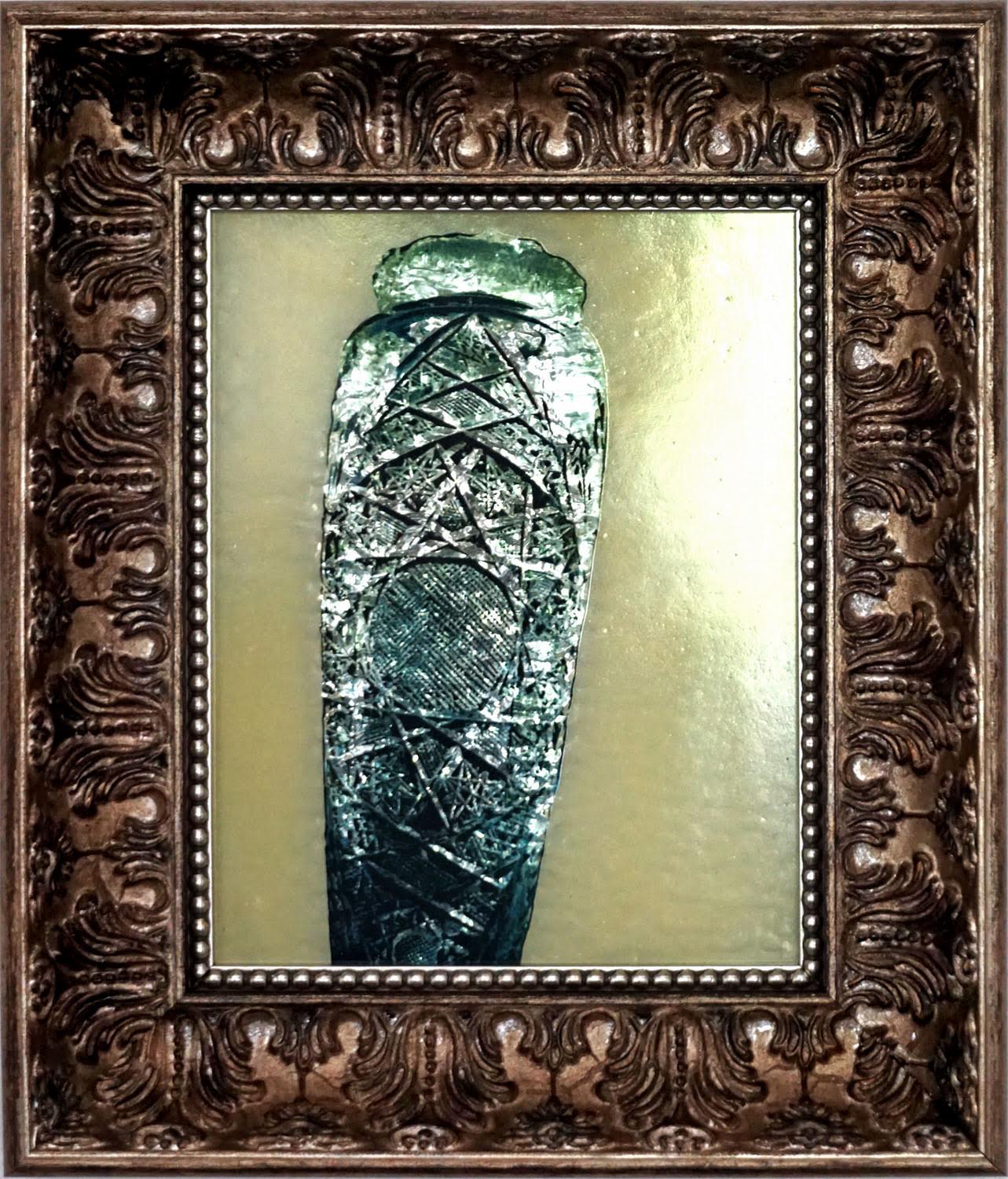
Her latest work involves process-heavy abstract paintings of luxury glass vessels. Susan begins by photographing ornate glassware from the American Brilliant Period (roughly 1880-1925), manipulates the photos to highlight the glass’ refractive properties, then paints the refracted forms back onto glass panes. These pieces highlight what might be the two factors uniting the entire family’s work: concerns with process and light.
Richard Amend, a painter and former board member of the Ojai Arts Commission, often begins his paintings with photographs, as well. These photographs are then manipulated and painted with an eye to their abstract forms. “The core MO for me is: divide and rotate,” Richard told the Hot Sheet. A great deal of his work consists of sublime abstractions of light coming through trees that reverberate with an almost mystical energy. “I’m doing painting that is about illumination, it’s about light… How the light comes through the trees is part of the equation of how I simplify it down... almost like doing op art.”
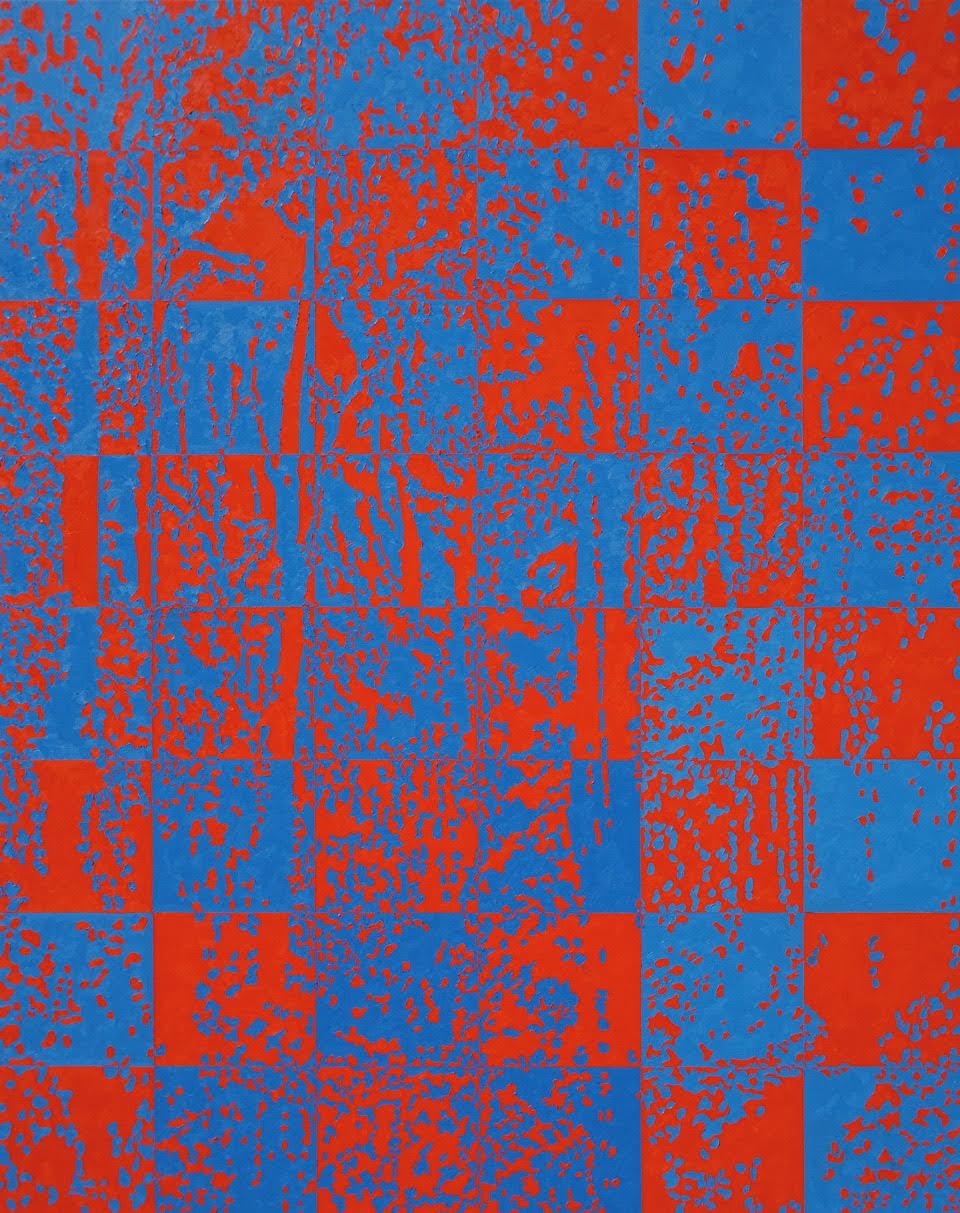
This concern for optics is further displayed in the works of Wyatt Amend, a ceramic sculptor and Artist-In-Residence at the Beatrice Wood Center for the Arts. Having been exposed to glasswork by his mother, and repeated summers spent at Pilchuck, Wyatt developed new techniques to make his functional clay objects look like glass; for instance, his ceramic goblets have a glossy glaze that causes them to reflect light like worn, opaque glass. He told the Hot Sheet that, “I kind of steal from other regions of the media and try to incorporate it into clay.” An influential residency at Australian National University “opened up a new door of incorporating new techniques from the glass studio into my ceramic practice,” Wyatt said. His interdisciplinary process involves the use of a lathe, like in woodworking, and carving and grinding techniques used in glass cold working.

Both parents are collaborating with Wyatt by painting on his ceramic vessels. For Susan, this means painting those abstract forms of light refracted by glass, as she joked to us that, “I’m putting cut-glass imagery on these bottles that are ceramic, which is amusing to me.”
As for how their work will interact in a group show, family members remain unsure. While Richard acknowledged that, “there are a couple of sort of recognizable design devices that we all seem to use,” even he admits that, “we’re going to find out that there’s more ways that our work overlaps than we realize.”
IF YOU GO:
Susan Stinsmuehlen-Amend, Richard Amend, and Wyatt Amend"Making Amends"
August 4th - 27th, 2016
Opening Reception: August 6th, 4 PM - 6 PM; Artist Talk: August 20th, 1:30 PM
The Blackboard Gallery – Studio Channel Islands
2222 E Ventura Blvd.
Camarillo, CA 93010
Tel.: 805.383.1368
Website: studiochannelislands.org



